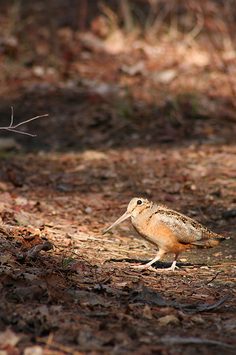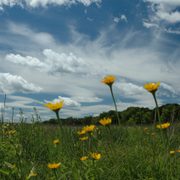Posts tagged with “Cowling Arboretum” (All posts)
-
Hear about the adventures of Brent and Walter on the Carleton farm this summer!
-
Learn what the Arb crew has been up to this summer
-
Nancy and the Arb Crew are hard at work this summer. Here’s an update on what they’re working on!
-
In the Oct. 20th edition of the Arb Notes Mira Alecci discusses the Best Woods region in the northern section of the Carleton Arboretum. What is “Best” about it? How close is Best Woods to the historical land cover of the Carleton Arboretum? And where do all the garter snakes go in the winter? Do they have garter snake parties?
-
Vitis riparia! Though the name might be unfamiliar to some of you, the sight of this plant is quite a common thing in the arb. Better known as frost grape, or riverside grape, this ubiquitous vine is just dripping with fruit this time of year. And it’s edible! John Vigeland breaks down how to create a successful jam from its berries.
-
As spring begins to turn to summer, a whole new world is blooming in the arb. This is especially evident throughout the prairies as wildflowers and grasses start to bloom. But there is strong competition amongst the many different species of flowers and grasses for space, and many seeds need some help in order to germinate.
There is a surprising animal which provides the opportunity for many of these plants to thrive in such a crowded environment. That animal is the Plains Pocket Gopher, Geomys bursarius. An unsightly tan-colored gopher reaching up to 13 inches in length, it has short legs with huge feet and long teeth made for digging. Rarely seen above ground, it is identified by the mounds it leaves when it burrows. These mounds are about a foot in diameter and have a distinct shape resembling a horseshoe and can be found throughout the prairies in the arb.
-
Annual Arb Bird Count this Saturday!
At this time of year, the arb serves as an important stopover point for many migrant bird species. Check them out soon, before they continue northward, or are obscured by spring foliage! Among the species recently reported in the arb are Yellow-rumped Warblers, Orange-crowned Warblers, American Redstarts and Blue-gray Gnatcatchers. Most of these small, colorful birds are neotropical migrants which have spent the winter in Central or Southern America, and are currently en route to their nesting grounds in Canadian boreal forests.
In addition to these temporary visitors, the arb is also full of recently returned birds here to stay for the summer. Baltimore orioles can be spotted in pairs, beginning the process of constructing their distinctive, hanging nests. Male Red-winged Blackbirds are staking claim to pieces of marsh and shore-line, hoping to attract females with their territory and song. Eastern Bluebirds have colonized many of the bird boxes established in the arb. And now for a piece of bird trivia: Bluebirds (and, for that matter, all birds that appear blue in color) don’t actually have any blue pigments in their feathers. The blue that we perceive when looking at these birds is actually the result of structural color, or the physical alteration of light achieved by certain feather structures. If you looked at a backlit Bluebird feather, it wouldn’t appear blue at all, instead it would be a dull brown.
Just as a reminder, this Saturday is Carleton’s annual arboretum bird count, and everyone is welcome to participate! Meet at the tennis courts parking lot in the lower arb at 6 am with your binoculars and field guide, if you have them. Email arb director Nancy Braker (nbraker) with any questions.
-

This past Friday evening, the Arb Naturalists enjoyed the opportunity to watch the mating display of the American Woodcock, a brown mottled seagull-like bird with a long bill. The complex “sky dance” of the male woodcock takes place during sunset each evening starting in April and commencing in May. The display is best described by Aldo Leopold in an essay from A Sand County Almanac:
“Knowing the place and the hour, you seat yourself under a bush to the east of the dance floor and wait, watching against the sunset for the woodcock’s arrival. He flies in low from some neighboring thicket, alights on the bare moss, and at once begins the overture: a series of queer throaty peents spaced about two seconds apart, and sounding much like the summer call of the nighthawk… Suddenly the peenting ceases and the bird flutters skyward in a series of wide spirals, emitting a musical twitter. Up and up he goes, the spirals steeper and smaller, the twittering louder and louder, until the performer is only a speck in the sky. Then, without warning, he tumbles like a crippled plane, giving voice in a soft liquid warble that a March bluebird might envy. At a few feet from the ground he levels off and returns to his peenting ground, usually to the exact spot where the performance began, and there resumes his peenting.”
-
Carp in the Cannon
Despite the less than desirable weather that has characterized the first half of the term, spring in the Arb is in full swing! The Cannon River is experiencing a discharge rate (~2500 cubic feet per second) that is significantly higher than the average value (868 cubic feet per second) for this time of year. This combined with runoff from the surrounding landscape has created patches of seasonal flooded forest habitat that is used by a variety of species. Look for herons and many species of both migratory and resident waterfowl including wood ducks, blue-winged teal, mallards, coots, and mergansers occupying this unique and ephemeral niche.
Unfortunately, the common carp (Cyprinus carpio), an invasive species, exploits these flooded areas as well—often in such large numbers that they can be caught by hand! C. carpio, introduced from Europe and Asia in the 1880s as a game fish, has the ability to dramatically alter the dynamics of the floodplain forest by disrupting the shallowly rooted plants on which it feeds. Additionally, in non-seasonal aquatic environments, carp alter the feeding ecology of waterfowl and other fish by muddying the water and releasing phosphorous which causes changes in algal population dynamics. So please, do your part to reduce Minnesota’s prolific carp population—provided that you have a fishing license of course.
In the weeks to come, stay tuned to this column and to the Arb website (http://apps.carleton.edu/campus/arb/seasonal/) for updates on other exciting spring events—like wood warbler migration and May wildflowers! Meanwhile keep your eyes out for droves of yellow-rumped warblers (easily identifiable by their yellow rump and sides), bloodroot (a white six-petaled wildflower found in Best Woods) and Dutchman’s breeches (white-pink wildflower shaped like upside-down pants found in the floodplain and in Stork forest in the Upper Arb).Your student naturalists are Mira Alecci, Amy Alstad, Chelsea Clifford, Jeremy Hayward, Emily LeGrand, Lindsey Nietmann, David Smith, Hannah Specht, John Vigeland, and Spencer Wigmore
-
We arb naturalists have been excited to see the migratory waterfowl moving through lately. Some of these birds are only around campus for as little as two weeks as they head north for the summer. Some highlights from our recent waterfowl expedition include: hooded mergansers (a personal favorite), common mergansers, lesser scaups, coots, redheads, canvasbacks, gadwalls, goldeneyes, buffleheads, ring billed gulls and a flock of about 40 pelicans! In the past few days the campus has also welcomed back cormorants, black sea birds that breed up north here. They’ve been spotted on Lyman Lakes—in the water they resemble the profile of a loon but swim with their head tilted back a bit. If you are trying to learn to identify birds by their voice, then cormorants will pose a problem—they are largely silent (unlike the Canada Geese that have come back as well) though they apparently make pig-like noises when nesting. Get out and see these birds before they leave! Good spots to look are the retention pond below the Rec, and the turtle pond in the lower arb.
Categories
- Building and Planning
- Carleton's Wind Turbines
- Climate Change
- Conferences
- Cowling Arboretum (Current Category)
- Ecosystem Management
- Emissions and Offsets
- Energy Sources & Uses
- Environmental Justice
- Events
- Food
- Higher Education
- International News
- National News
- News
- STA Program
- Student Life
- Student Projects
- Sustainability
- Sustainable Planning & Development
- Transportation
- Waste
